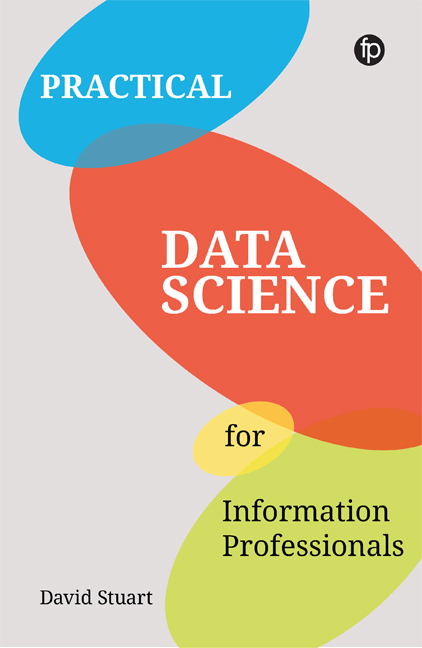Book contents
- Frontmatter
- Dedication
- Contents
- Figures
- Tables
- Boxes
- Preface
- 1 What is Data Science?
- 2 Little Data, Big Data
- 3 The Process of Data Science
- 4 Tools for Data Analysis
- 5 Clustering and Social Network Analysis
- 6 Predictions and Forecasts
- 7 Text Analysis and Mining
- 8 The Future of Data Science and Information Professionals
- References
- Appendix – Programming Concepts for Data Science
- Index
6 - Predictions and Forecasts
Published online by Cambridge University Press: 14 August 2020
- Frontmatter
- Dedication
- Contents
- Figures
- Tables
- Boxes
- Preface
- 1 What is Data Science?
- 2 Little Data, Big Data
- 3 The Process of Data Science
- 4 Tools for Data Analysis
- 5 Clustering and Social Network Analysis
- 6 Predictions and Forecasts
- 7 Text Analysis and Mining
- 8 The Future of Data Science and Information Professionals
- References
- Appendix – Programming Concepts for Data Science
- Index
Summary
Data science is particularly valued for its ability to help predict the future. The desire to predict the future is not new, but while the art of forecasting may have come a long way from divination by chicken bones, it has not necessarily come as far as we might always presume.
The chapter is split into four main parts, narrowing down from predictions in the broadest sense to the practical application for library and information professionals, before looking more closely at statistical methodologies. First it considers the subject of making predictions and forecasts more widely, the importance of recognising the limitations of applying statistical methods to well-defined data sets, and some of the alternative approaches to forecasting. This is followed by an overview of some of the tools and resources that have been used for making predictions with data and the potential application of such methods for library and information professionals. The chapter finishes by looking at the practical application of some specific statistical methodologies: regression analysis and exponential smoothing.
Predictions and forecasts beyond data science
Today's media is filled with an endless stream of forecasts and predictions about what we can expect the future to hold. Alongside our increasingly longrange weather forecasts, our media is saturated with long-term forecasts: central banks make forecasts about inflation and economic growth; health organisations predict the rise or fall of longevity, populations, and the spread of various communicable diseases; and scientists forecast temperature rises and predict the impact of climate change. At the same time there is always an endless stream of pundits ready to predict the doom or utopia just over the horizon for a company, political party or country, based on the various business or political decisions it currently faces. Invariably many of the predictions will be wrong, this is partly the result of conflating forecast and prediction, but mostly because of the complexity of the world.
The terms prediction and forecast are often used interchangeably with reference to anticipated future events, but it can be useful to distinguish the two words by looking at the emphasis they place on existing data. Whereas forecasts are typically more grounded in existing data, predictions may include instances where visions of the future rely on more tangential information.
- Type
- Chapter
- Information
- Practical Data Science for Information Professionals , pp. 97 - 112Publisher: FacetPrint publication year: 2020



